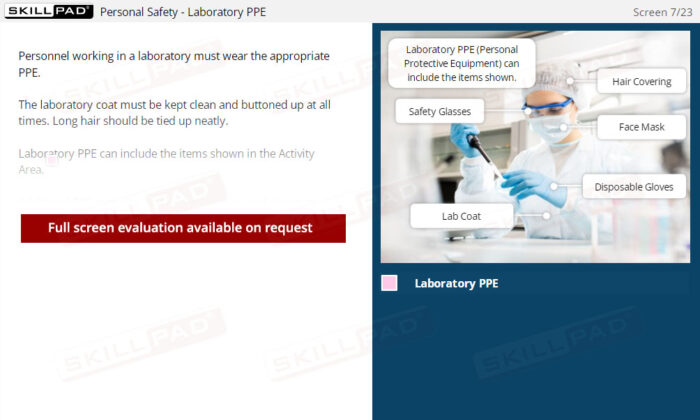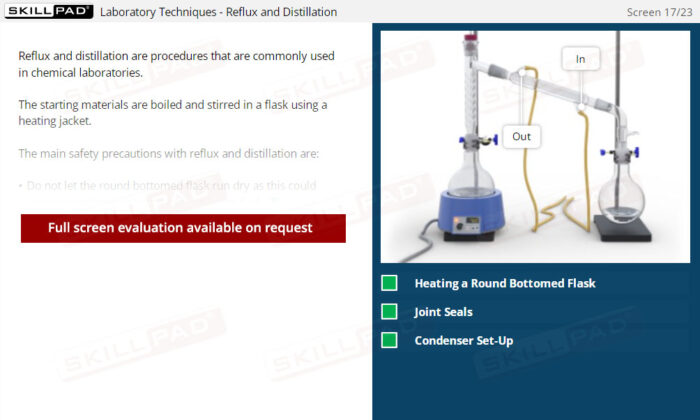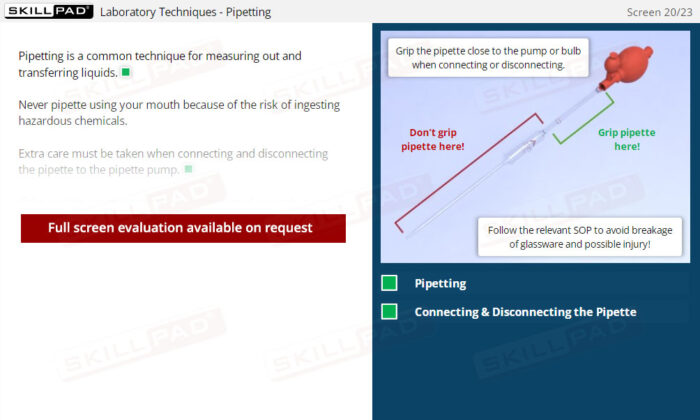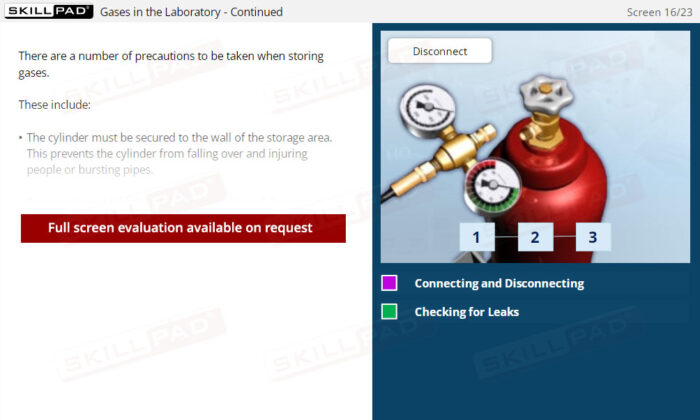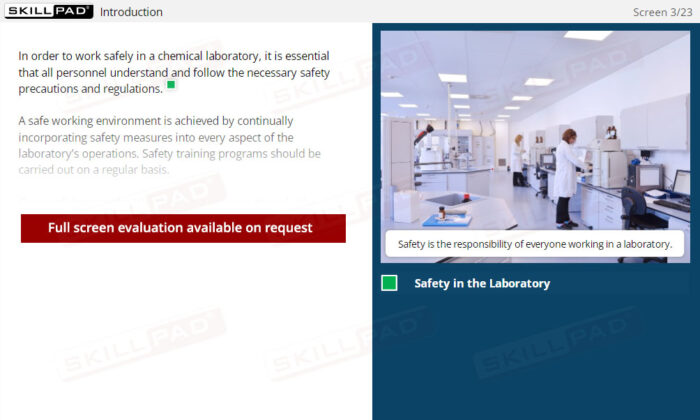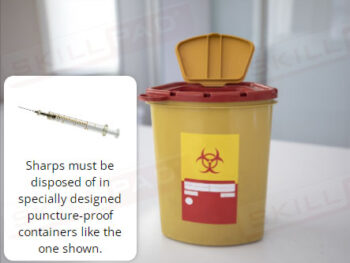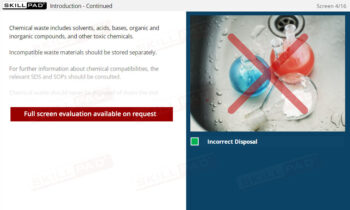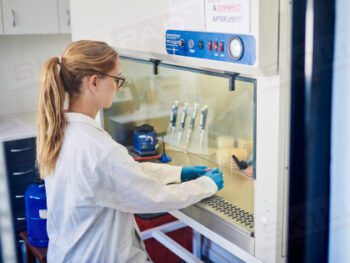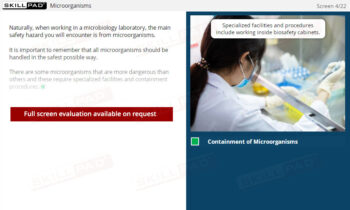Laboratory Safe Work Practices
An essential guide to ensuring safety in the chemical laboratory, focusing on the use of documented safety information sources, personal protective equipment (PPE), and correct operation of laboratory equipment. The module highlights critical practices for using fume hoods, handling hazardous materials, and safely performing procedures like reflux, distillation, separations, and the operation of analytical devices. It also addresses the handling of gas cylinders and the importance of proper waste disposal, emphasizing individual responsibility in maintaining a safe laboratory environment.
Whether for onboarding or annual refresher training, this Module is seamlessly deployable on any LMS and can be tailored to your company’s exact needs.
Duration: 30 Mins
Grade: Core Library
Description
- Enhanced Safety Awareness: Understand the critical importance of laboratory safety and the individual responsibility everyone holds to prevent accidents and ensure a secure working environment.
- Mastery of Essential Safety Protocols: Gain in-depth knowledge of using Safety Data Sheets (SDSs), Standard Operating Procedures (SOPs), and laboratory safety policies to mitigate risks when working with hazardous chemicals.
- Proficient Use of Laboratory Equipment: Learn the correct operation and precautions for essential equipment, including fume hoods, gas cylinders, and analytical devices, to minimize exposure to hazardous situations.
- Practical Skills for Safe Laboratory Procedures: Develop the ability to safely execute tasks such as reflux, distillation, weighing hazardous materials, and liquid separations, ensuring compliance with safety protocols.
- Preparedness for Emergency Situations: Be equipped with the knowledge to respond effectively to common laboratory hazards like chemical spills, burns, cuts, and electrical shocks, ensuring rapid and appropriate action when needed.
Learning Objectives
- Name and describe the three documented sources of safety information in the laboratory.
- Describe the operation of a fume hood.
- Describe the five rules to follow when working at a fume hood.
- List examples of hazards in the laboratory.
- Describe the correct procedure for safely using a syringe.
- Describe the safety precautions to follow when working with and changing gas cylinders.
- List the safety precautions to be taken when performing each of the following processes: reflux & distillation, separations, weighing and pipetting.
- List the safety precautions to be taken when operating analytical equipment in the laboratory.
Keywords
- Analytical Equipment Operation
- Fume Hood Operation
- Laboratory Hazards
- Laboratory Safety Training
- Personal Protective Equipment (PPE)
- PPE In Laboratories
- Standard Operating Procedure (SOP)
Module Features
Animations
Voice Over
Knowledge Checks
Assessments
SCORM/AICC compatible
Full Screen

